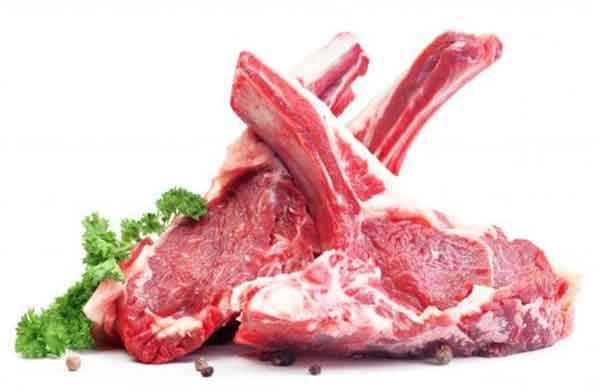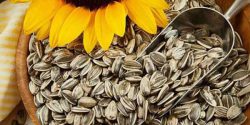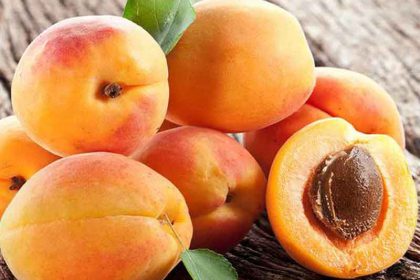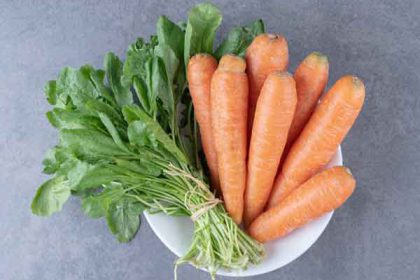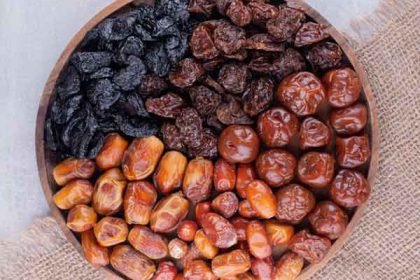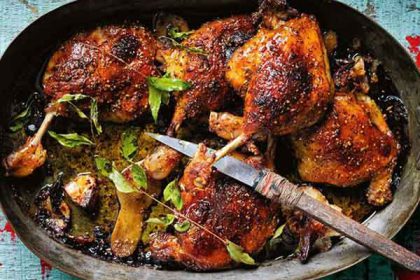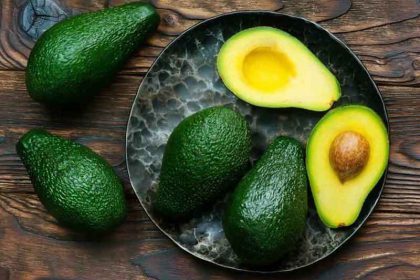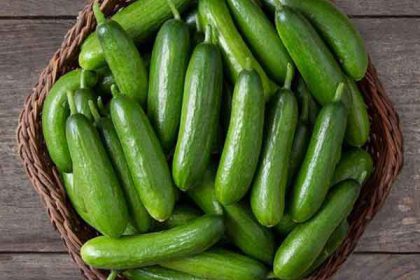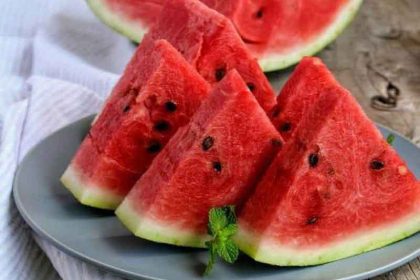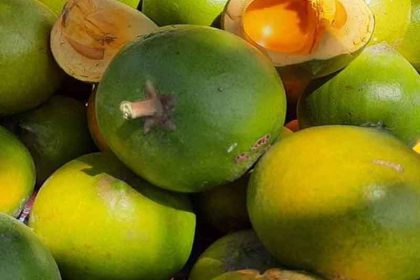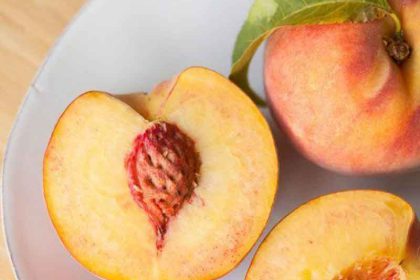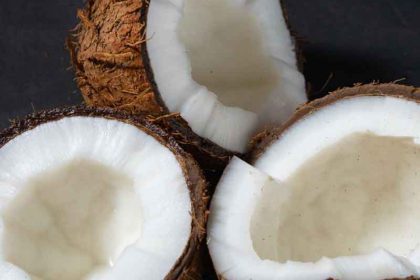Benefits of mutton for weight loss and heart and males
Mutton
Benefits of mutton for weight loss and heart and males on Nicholi site. We hope this article will be of interest to you.
The text provides information on the benefits and considerations of consuming mutton. It highlights that mutton is a good source of high-quality protein, essential nutrients, iron, and vitamins such as B12. Mutton is beneficial for brain health, energy boost, and overall nutrient density. However, it is important to be cautious of its high cholesterol and saturated fat content. Some individuals may have allergies or sensitivities to mutton, and its high purine content may be a concern for those with gout or kidney issues. The cooking methods used for mutton can also affect its health implications. The text also discusses the benefits of mutton for females, skin, hair, and weight loss. Additionally, it compares the benefits of mutton and chicken and provides benefits specifically for males. Lastly, it mentions the top 10 health benefits of meat, emphasizing its high-quality protein and essential nutrients.
Mutton benefits
Mutton, which refers to the meat of mature sheep, can provide several benefits when included in a balanced diet. Here are some potential benefits of consuming mutton:
High-Quality Protein: Mutton is an excellent source of high-quality protein, containing all the essential amino acids needed for the growth, repair, and maintenance of body tissues. Protein is important for building and repairing muscles, supporting the immune system, and maintaining healthy skin, hair, and nails.
Essential Nutrients: Mutton is a rich source of essential nutrients like vitamins and minerals. It contains various B vitamins, including vitamin B12, which is important for the production of red blood cells and proper nerve function. Mutton also provides minerals like iron, zinc, selenium, and phosphorus, which are essential for overall health and various bodily functions.
Iron Content: Mutton is particularly rich in iron, a mineral necessary for the production of hemoglobin in red blood cells. Adequate iron intake helps prevent iron-deficiency anemia and supports oxygen transport throughout the body, promoting energy levels and overall vitality.
Brain Health: Mutton contains nutrients that are beneficial for brain health. It is a good source of vitamin B12 and omega-3 fatty acids, both of which are important for cognitive function, memory, and brain development.
Energy Boost: The high protein and iron content in mutton can provide an energy boost and help combat fatigue. Iron is crucial for oxygen transportation and energy production in the body, while protein provides sustained energy and satiety.
Nutrient Density: Mutton is a nutrient-dense food, meaning it provides a significant amount of essential nutrients relative to its calorie content. Including nutrient-dense foods like mutton in your diet can contribute to overall health and well-being.
Mutton side effects
While mutton can have various benefits, it’s important to be aware of potential side effects or considerations associated with its consumption. Here are a few points to keep in mind:
High Cholesterol and Saturated Fat: Mutton is generally higher in cholesterol and saturated fat compared to other lean meats. Excessive intake of saturated fat can contribute to high cholesterol levels and increase the risk of cardiovascular diseases. It’s important to consume mutton in moderation and balance it with other lean protein sources.
Allergies and Sensitivities: Some individuals may have allergies or sensitivities to mutton or other types of red meat. Allergic reactions can range from mild symptoms like hives or itching to severe reactions like difficulty breathing. If you have a known allergy or sensitivity to mutton or red meat, it’s best to avoid its consumption.
Purine Content: Mutton is relatively high in purines, which are natural compounds found in meat. Purines can be broken down into uric acid, and high levels of uric acid can contribute to gout or kidney stone formation in susceptible individuals. If you have a history of gout or kidney issues, it may be advisable to limit your intake of high-purine foods, including mutton.
Cooking Methods: The cooking methods used for mutton can also impact its health implications. Cooking methods that involve high heat, grilling, or charring can lead to the formation of potentially harmful compounds like heterocyclic amines (HCAs) and polycyclic aromatic hydrocarbons (PAHs). These compounds have been associated with an increased risk of certain cancers. To minimize the formation of these compounds, it’s recommended to choose healthier cooking methods like baking, boiling, or stewing.
Antibiotics and Hormones: Some commercial farming practices may involve the use of antibiotics or hormones in sheep rearing. While regulations exist to ensure safe levels of these substances in meat, it’s generally advisable to choose organic or grass-fed mutton to minimize potential exposure.
Mutton benefits for female
Mutton, which refers to the meat of mature sheep, can provide several benefits for females. Here are some potential benefits of consuming mutton:
Rich in Protein: Mutton is an excellent source of high-quality protein. Protein is essential for building and repairing tissues, supporting the immune system, and maintaining healthy hair and nails.
Iron Content: Mutton is a good source of iron, which is crucial for females, especially during menstruation and pregnancy. Iron helps in the production of hemoglobin, which carries oxygen to cells and prevents iron-deficiency anemia.
Vitamin B12: Mutton is a rich source of vitamin B12, which is necessary for the formation of red blood cells, proper nerve function, and DNA synthesis. Adequate intake of vitamin B12 is particularly important for pregnant and lactating women.
Zinc: Mutton contains zinc, a mineral that plays a role in immune function, wound healing, and reproductive health. Adequate zinc intake is essential for maintaining hormonal balance and supporting fertility.
Omega-3 Fatty Acids: While mutton is not as high in omega-3 fatty acids as fish, it still contains moderate amounts. Omega-3 fatty acids have been associated with various health benefits, including reducing inflammation, supporting brain health, and potentially reducing the risk of certain chronic diseases.
Nutrient Density: Mutton is a nutrient-dense food, meaning it provides a significant amount of essential nutrients relative to its calorie content. This can be beneficial for overall health and well-being.
Mutton benefits for skin
Mutton can potentially offer some benefits for the skin due to its nutrient content. A few ways in which mutton may contribute to skin health:
Collagen Production: Mutton contains amino acids, such as proline and glycine, which are essential for collagen synthesis. Collagen is a protein that provides structure and elasticity to the skin, helping to maintain its firmness and reduce the appearance of wrinkles.
Zinc Content: Mutton is a good source of zinc, a mineral that plays a role in skin health. Zinc helps in regulating oil production, promoting wound healing, and supporting the immune system, which can be beneficial for maintaining healthy skin.
Vitamin B12: Mutton is rich in vitamin B12, which is involved in cell reproduction and renewal. Adequate levels of vitamin B12 can contribute to a healthy complexion and help prevent dryness and dullness.
Antioxidant Properties: Mutton contains various antioxidants, including selenium, vitamin E, and vitamin C. These antioxidants help protect the skin cells from damage caused by free radicals, which can contribute to premature aging and skin conditions.
Hydration: Mutton contains natural fats and moisture, which can help keep the skin hydrated and improve its overall texture and appearance.
Benefits of mutton soup
Mutton soup, made by simmering mutton meat with vegetables, herbs, and spices in a flavorful broth, can provide several benefits. Here are some potential benefits of consuming mutton soup:
Nutrient-Rich: Mutton soup can be a nutrient-dense meal, providing a good balance of proteins, vitamins, and minerals. It contains the nutritional benefits of mutton, including high-quality protein, iron, zinc, and B vitamins, along with the additional nutrients from vegetables and herbs used in the soup.
Hydration: Soups, including mutton soup, can contribute to hydration as they consist of liquid components. Proper hydration is essential for overall health, maintaining bodily functions, and supporting healthy skin.
Immune Support: Mutton soup, especially when made with bone-in cuts, can release gelatin and collagen into the broth. These substances contain amino acids that support the immune system and help maintain a healthy gut. The rich broth may also provide vitamins and minerals that support immune function.
Digestive Health: Mutton soup, particularly when made with bones, cartilage, and connective tissues, can provide gelatin and collagen, which support digestive health. These substances help soothe and heal the lining of the digestive tract and promote the growth of beneficial gut bacteria.
Warm and Comforting: Mutton soup can be comforting, especially during colder months or when you’re feeling under the weather. Warm liquids can help soothe the throat, ease congestion, and provide a sense of comfort.
Satiety and Weight Management: The combination of protein, fiber from vegetables, and the filling nature of a soup can contribute to a feeling of satiety and potentially aid in weight management by reducing overall calorie intake.
Hygienic Preparation: Cooking mutton in a soup form requires boiling or simmering, which can help kill potential bacteria or parasites present in raw meat, ensuring a hygienic preparation.
Benefits of eating mutton for hair
While mutton can provide various nutrients that support overall health, there is limited scientific evidence specifically linking its consumption to hair benefits. However, the following nutrients found in mutton may indirectly contribute to hair health:
Protein: Mutton is a rich source of high-quality protein, which is essential for the growth and maintenance of hair. Hair is primarily composed of a protein called keratin, so an adequate protein intake is important for healthy hair growth.
Iron: Mutton contains iron, a mineral that is crucial for the transportation of oxygen to hair follicles. Insufficient iron levels can lead to hair loss or thinning. Adequate iron intake may support healthy hair growth and prevent iron-deficiency anemia, which can cause hair-related problems.
B vitamins: Mutton contains various B vitamins, such as vitamin B12, riboflavin (B2), and niacin (B3). These vitamins play a role in the metabolism of cells, including those in the scalp and hair follicles. While specific research on mutton and hair is limited, deficiencies in certain B vitamins have been associated with hair loss and poor hair health.
Zinc: Mutton is a source of zinc, which is involved in cell growth and repair. Zinc deficiency has been linked to hair loss and poor hair quality. Adequate zinc intake may support the health and growth of hair follicles.
Omega-3 Fatty Acids: Although mutton is not as high in omega-3 fatty acids as certain fish, it still contains moderate amounts. Omega-3 fatty acids have anti-inflammatory properties and can contribute to overall scalp health. A healthy scalp provides a favorable environment for hair growth.
Is mutton good for weight loss?
Mutton can be included as part of a balanced diet for weight loss, but it’s important to consider a few factors:
Protein Content: Mutton is a good source of high-quality protein, which can help promote satiety and reduce overall calorie intake. Protein-rich foods can make you feel fuller for longer, potentially reducing the desire to snack between meals and aiding in weight loss.
Calorie Considerations: While mutton is a good source of protein, it is also relatively high in calories compared to leaner meats. It’s important to consume mutton in moderation and consider portion sizes to maintain a calorie deficit for weight loss.
Fat Content: Mutton contains varying amounts of fat, including saturated fat. While some fat is essential for overall health, excessive intake of saturated fat can contribute to weight gain and increase the risk of cardiovascular diseases. Opting for leaner cuts of mutton and trimming visible fat can help reduce the overall fat content.
Cooking Methods: The cooking methods used for mutton can affect its impact on weight loss. Avoid cooking methods that involve excessive oil or added fats, such as deep frying. Instead, opt for healthier cooking methods like grilling, baking, or stewing, which minimize the need for additional fats and calories.
Overall Diet and Lifestyle: Weight loss is not solely determined by the consumption of a single food. It depends on the overall balance of your diet, calorie intake, physical activity levels, and lifestyle choices. Incorporating mutton as part of a well-rounded, calorie-controlled diet that includes plenty of vegetables, whole grains, and healthy fats is key to achieving and maintaining weight loss goals.
Chicken vs mutton benefits
Both chicken and mutton offer various benefits, and the choice between them often comes down to personal preferences and dietary needs. Here’s a comparison of their potential benefits:
Chicken Benefits:
Lean Protein: Chicken is a lean source of protein, meaning it contains a relatively low amount of fat. It can be beneficial for individuals looking to maintain or build muscle mass while managing their overall calorie intake.
Lower in Saturated Fat: Chicken, particularly skinless chicken breast, is lower in saturated fat compared to mutton. A diet lower in saturated fat can help reduce the risk of cardiovascular diseases.
Vitamin B12: Chicken is a good source of vitamin B12, which is important for red blood cell production, nerve function, and DNA synthesis. Adequate vitamin B12 intake is necessary for overall health and energy levels.
Versatility: Chicken is a highly versatile meat that can be cooked in various ways and incorporated into a wide range of dishes. It’s a popular choice due to its mild taste and ability to blend well with different flavors.
Mutton Benefits:
Higher Iron Content: Mutton is generally richer in iron compared to chicken. Iron is essential for the production of red blood cells and oxygen transport in the body. It can be particularly beneficial for individuals at risk of or experiencing iron-deficiency anemia.
Zinc: Mutton is a good source of zinc, a mineral that supports immune function, wound healing, and cell growth. Adequate zinc intake is important for overall health and maintaining a strong immune system.
Flavor and Texture: Mutton has a distinct flavor and tenderness that some individuals prefer. It can add depth and richness to dishes and is often favored for its unique taste.
Nutrient Variety: Mutton provides a range of nutrients, including high-quality protein, B vitamins, iron, zinc, and omega-3 fatty acids. These nutrients contribute to overall health and well-being.
Mutton benefits for male
Mutton can offer various benefits for males due to its nutrient composition. Some potential benefits of consuming mutton for men:
Protein Source: Mutton is a rich source of high-quality protein. Protein is essential for muscle growth, repair, and maintenance. It can support muscle development and help meet the increased protein needs of physically active individuals, including those engaged in weightlifting or strength training.
Iron Content: Mutton is relatively high in iron, a mineral that plays a crucial role in the production of red blood cells. Sufficient iron levels are important for oxygen transport, energy production, and overall vitality. Adequate iron intake can help prevent iron-deficiency anemia, which can cause fatigue and decreased performance.
Zinc: Mutton is a good source of zinc, a mineral that is vital for male reproductive health. Zinc is involved in testosterone production, sperm formation, and overall reproductive function. Adequate zinc intake is necessary for maintaining normal testosterone levels and optimal sexual health.
Vitamin B12: Mutton is rich in vitamin B12, which is important for nerve function, red blood cell production, and DNA synthesis. Adequate vitamin B12 levels support overall energy levels, cognitive function, and general well-being.
Nutrient Density: Mutton is a nutrient-dense food, meaning it provides a significant amount of essential nutrients relative to its calorie content. Consuming nutrient-dense foods like mutton can support overall health, including the immune system, energy levels, and organ function.
Top 10 health benefits of meat
Meat, when consumed as part of a balanced diet, can provide several health benefits. Here are ten potential health benefits associated with the consumption of meat:
High-Quality Protein: Meat is an excellent source of high-quality protein, containing all the essential amino acids needed for the growth, repair, and maintenance of body tissues. Protein is essential for building and repairing muscles, supporting the immune system, and maintaining healthy skin, hair, and nails.
Vitamins and Minerals: Meat is rich in various vitamins and minerals, including iron, zinc, selenium, vitamin B12, vitamin D, and others. These nutrients are important for overall health, supporting red blood cell production, boosting immune function, aiding in energy metabolism, and maintaining healthy bones, among other functions.
Iron Source: Red meat, such as beef and lamb, is particularly rich in heme iron, which is more easily absorbed by the body compared to non-heme iron found in plant-based foods. Iron is essential for the production of hemoglobin in red blood cells, which carries oxygen throughout the body and supports energy levels.
Source of Vitamin B12: Meat, especially animal meats, is one of the best sources of vitamin B12. This vitamin is crucial for nerve function, DNA synthesis, red blood cell production, and brain health. Adequate vitamin B12 intake is important for overall well-being.
Omega-3 Fatty Acids: Certain types of meat, such as fatty fish like salmon and sardines, are rich in omega-3 fatty acids. These essential fatty acids have been associated with a reduced risk of heart disease, improved brain function, and anti-inflammatory effects.
Energy and Satiety: The high protein and fat content in meat can provide a source of sustained energy and promote satiety. Including meat in meals can help curb hunger, control appetite, and contribute to overall satisfaction with a meal.
Muscle Health: Meat provides essential nutrients, such as protein and amino acids, that are crucial for muscle health and growth. It can support muscle recovery after exercise, assist in muscle maintenance as individuals age, and aid in overall muscle strength and function.
Blood Sugar Regulation: Protein-rich meats, when consumed as part of a balanced meal, can help regulate blood sugar levels by slowing down the digestion and absorption of carbohydrates. This can be particularly beneficial for individuals with diabetes or those looking to manage their blood sugar levels.
Nutrient Density: Meat is considered a nutrient-dense food, meaning it provides a significant amount of essential nutrients relative to its calorie content. Consuming nutrient-dense foods like meat can help meet the body’s nutrient needs and support overall health and well-being.
Taste and Enjoyment: Including meat in the diet can add variety to meals and contribute to the enjoyment of eating. Enjoying the food we eat is important for overall satisfaction and adherence to a healthy and balanced diet.
Chicken vs mutton protein
Both chicken and mutton are good sources of protein, but their protein content can vary depending on the specific cut of meat. Here’s a general comparison of protein content between chicken and mutton:
Chicken: Chicken is known for being a lean source of protein, particularly chicken breast meat without the skin. On average, chicken breast contains about 31 grams of protein per 100 grams (3.5 ounces) serving. Other cuts of chicken, such as thighs or drumsticks, may contain slightly less protein but still provide a significant amount.
Mutton: Mutton, which refers to the meat of adult sheep, is also a good source of protein. The protein content of mutton can vary depending on the cut and fat content. On average, mutton contains about 25-27 grams of protein per 100 grams (3.5 ounces) serving.
It’s important to note that these values are approximate and can vary based on factors such as the breed, age, and diet of the animal. Additionally, different cooking methods and preparations can affect the protein content slightly.
Both chicken and mutton provide valuable protein that can contribute to muscle growth, repair, and overall health. Including a variety of protein sources in your diet, including poultry (like chicken) and red meat (like mutton), can help ensure a well-rounded intake of essential amino acids.
Chicken vs mutton benefits weight loss
Both chicken and mutton can be included in a weight loss diet, as they offer benefits that can support your weight loss goals. Here’s a comparison of the potential benefits of chicken and mutton for weight loss:
Chicken:
Low in Calories: Skinless chicken breast, in particular, is a lean protein source that is low in calories and fat. It can help create a calorie deficit, which is important for weight loss.
High Protein Content: Chicken is a rich source of high-quality protein, which is essential for preserving muscle mass and promoting satiety. Protein can help you feel full for longer, reducing the likelihood of overeating and aiding in weight management.
Versatility: Chicken is a versatile meat that can be prepared in various ways, allowing for a wide range of healthy and flavorful meal options while still supporting weight loss.
Mutton:
Satiety and Fullness: Mutton, like chicken, is a protein-rich meat that can promote feelings of fullness and satiety. Adequate protein intake can help curb hunger cravings and reduce snacking, which can support weight loss efforts.
Nutrient Density: Mutton provides various essential nutrients, including protein, iron, zinc, and B vitamins. Consuming nutrient-dense foods like mutton can help meet your nutritional needs while controlling calorie intake.
Flavor and Satisfaction: Mutton has a distinct flavor and tenderness that some individuals prefer. Enjoying the taste and texture of your meals can contribute to overall satisfaction and adherence to a weight loss diet.
It’s important to note that the specific benefits of chicken or mutton for weight loss depend on various factors, including portion sizes, cooking methods, and overall calorie balance. It’s advisable to choose lean cuts of meat, trim visible fat, and use healthy cooking techniques such as grilling, baking, or boiling, to minimize added fats and calories.
Fish vs chicken vs mutton
When comparing fish, chicken, and mutton, each has its own unique nutritional profile and potential health benefits. Here’s a comparison of these meats:
Fish:
Omega-3 Fatty Acids: Fatty fish such as salmon, mackerel, and sardines are excellent sources of omega-3 fatty acids, specifically EPA and DHA. These fatty acids are known for their anti-inflammatory properties and potential benefits for heart health, brain function, and overall well-being.
High-Quality Protein: Fish is a good source of high-quality protein, containing essential amino acids necessary for muscle growth, repair, and various bodily functions.
Low in Saturated Fat: Fish, especially lean varieties like cod or sole, is generally low in saturated fat. Consuming fish as part of a balanced diet can be beneficial for heart health.
Chicken:
Lean Protein: Chicken, particularly skinless chicken breast, is a lean source of protein. It offers high-quality protein while being relatively low in fat, making it a popular choice for individuals aiming to build or maintain muscle mass.
Versatility: Chicken is a versatile meat that can be prepared in various ways, allowing for a wide range of healthy and flavorful meal options.
Mutton:
Iron and Zinc: Mutton is a rich source of iron and zinc. Iron is essential for red blood cell production and oxygen transport, while zinc plays a vital role in immune function and overall health.
Flavor and Texture: Mutton has a distinct flavor and tenderness that some individuals prefer. It can add depth and richness to dishes.
Chicken vs mutton fat
When comparing the fat content of chicken and mutton, it’s important to consider that the fat content can vary depending on the specific cut of meat and the way it is prepared. However, there’s a general comparison:
Chicken: Chicken is generally considered lean meat, particularly skinless chicken breast. It contains less fat compared to other cuts like thighs or drumsticks. Skinless chicken breast is especially low in fat, with approximately 2-3 grams of fat per 100 grams (3.5 ounces) serving. It is a popular choice for those looking to reduce their fat intake while still obtaining a good amount of protein.
Mutton: Mutton, or the meat of adult sheep, typically has a higher fat content compared to chicken. The specific fat content can vary depending on the cut and the amount of visible fat present. On average, mutton contains around 15-20 grams of fat per 100 grams (3.5 ounces) serving. It is important to note that mutton fat can be a combination of both saturated and unsaturated fats.
It’s worth mentioning that the type of fat present in both chicken and mutton can also differ. Chicken, especially skinless breast meat, tends to have lower levels of saturated fat compared to mutton. Excessive intake of saturated fat is generally associated with increased risk of cardiovascular diseases.
When choosing between chicken and mutton, if you are concerned about fat content, opt for lean cuts of meat, remove visible fat, and choose healthier cooking methods such as grilling, baking, or broiling to minimize added fats. Additionally, portion control and overall dietary balance play crucial roles in maintaining a healthy diet.
Chicken vs mutton digestion
In terms of digestion, chicken and mutton can be processed differently by the body due to their varying composition.
Chicken: Chicken is generally considered to be easier to digest compared to other meats. It has a relatively low-fat content, especially if you remove the skin and a higher protein content. The protein in chicken is relatively tender, making it easier for the digestive enzymes in the stomach to break it down. Additionally, chicken is lower in connective tissue compared to meats like beef or lamb, which can contribute to easier digestion.
Mutton: Mutton, being red meat, can be slightly more challenging to digest compared to chicken. It has a higher fat content, and certain cuts of mutton may also contain more connective tissue. These factors can make it take longer to break down during digestion. The higher fat content in mutton may require more digestive enzymes and bile production for optimal digestion.
However, it’s important to note that individual differences in digestion can vary. Some people may find chicken or mutton easier or harder to digest based on their own digestive capacity, tolerances, and overall gut health. Factors such as cooking methods, portion sizes, and personal preferences also play a role in individual digestion experiences.
To support healthy digestion, it’s generally recommended to choose lean cuts of meat, trim visible fat, and use cooking methods that minimize added fats. Additionally, incorporating plenty of fiber-rich fruits, vegetables, and whole grains, and staying hydrated can help promote overall digestive health.
Chicken vs mutton heat
If you are referring to the heat generated by consuming chicken or mutton, it’s important to note that both types of meat provide a similar thermogenic effect when consumed.
The thermogenic effect of food refers to the increase in body heat and metabolic rate that occurs during the digestion and processing of food. This increase in heat production is a result of the body’s energy expenditure in breaking down and absorbing nutrients from the food.
Both chicken and mutton are rich in protein, which has a higher thermogenic effect compared to fats or carbohydrates. When you consume protein-rich foods like chicken or mutton, your body requires more energy to digest and metabolize the protein, leading to a slight increase in body heat.
However, it’s worth mentioning that the thermogenic effect of food is relatively small compared to other factors that influence overall energy expenditure, such as physical activity and basal metabolic rate. Therefore, the heat generated by consuming chicken or mutton is unlikely to have a significant impact on your body temperature or overall heat balance.
Mutton vs chicken bodybuilding
Both mutton and chicken can be suitable protein sources for bodybuilding due to their high protein content. Here are some considerations when comparing mutton and chicken for bodybuilding:
Protein Content: Both mutton and chicken are excellent sources of high-quality protein, which is essential for muscle growth and repair. However, the protein content can vary depending on the specific cut of meat. Skinless chicken breast is particularly lean and can provide around 31 grams of protein per 100 grams (3.5 ounces) serving, while mutton generally contains around 25-27 grams of protein per 100 grams (3.5 ounces) serving.
Fat Content: Chicken, especially skinless breast meat, tends to be lower in fat compared to mutton. If you’re following a lower-fat bodybuilding diet, lean cuts of chicken may be preferred. However, it’s worth noting that healthy fats also play a role in supporting overall health, including hormone production and joint health.
Amino Acid Profile: Both mutton and chicken contain essential amino acids necessary for muscle protein synthesis. The amino acid profile is generally similar between the two, but mutton may have a slightly higher content of certain amino acids.
Personal Preference and Taste: Choosing between mutton and chicken may come down to personal preference and taste. Some individuals may prefer the flavor and texture of one over the other, which can influence adherence to a bodybuilding diet.
It’s important to consider that bodybuilding success is not solely dependent on the type of meat consumed but on various factors such as overall diet quality, training regimen, rest, and recovery. It’s advisable to focus on a well-rounded diet that includes a variety of protein sources, including chicken or mutton, alongside other nutrient-dense foods like vegetables, whole grains, and healthy fats.
Chicken vs mutton cholesterol
When comparing the cholesterol content of chicken and mutton, it’s important to note that cholesterol levels can vary based on the specific cut of meat and the way it is prepared. However, there’s a general comparison:
Chicken: Chicken is generally lower in cholesterol compared to mutton. Skinless chicken breast is particularly lean and contains about 85 milligrams of cholesterol per 100 grams (3.5 ounces) serving. Removing the skin can further reduce the cholesterol content, as the skin of chicken contains a higher concentration of cholesterol.
Mutton: Mutton, being red meat, tends to have a higher cholesterol content compared to chicken. The cholesterol content in mutton can vary depending on the cut and the amount of visible fat. On average, mutton contains around 70-80 milligrams of cholesterol per 100 grams (3.5 ounces) serving.
It’s important to note that while dietary cholesterol intake is a consideration for some individuals, research has shown that dietary cholesterol has a relatively modest impact on blood cholesterol levels for most people. Blood cholesterol levels are influenced more significantly by other factors such as genetics and saturated and trans fat intake.
If you have specific concerns about cholesterol levels or are following a cholesterol-lowering diet, it’s advisable to focus on overall dietary balance, portion control, and choosing lean cuts of meat. Incorporating a variety of protein sources, including lean chicken, fish, legumes, and plant-based proteins, can help create a well-rounded and cholesterol-friendly diet.
Is mutton good for health?
Mutton can be a part of a healthy and balanced diet when consumed in moderation and as part of an overall nutritious eating plan. Some factors to consider:
Nutrient Content: Mutton provides essential nutrients like high-quality protein, iron, zinc, vitamin B12, and various B vitamins. These nutrients play important roles in supporting muscle function, red blood cell production, immune system function, and overall health.
Protein Source: Mutton is a good source of protein, which is essential for muscle growth, repair, and overall body function. Including protein-rich foods like mutton in your diet can help meet your daily protein needs.
Iron and Zinc: Mutton is a rich source of iron and zinc. Iron is crucial for oxygen transport in the body, while zinc plays a role in immune function, growth, and wound healing. Including mutton as part of a balanced diet can help meet your iron and zinc requirements.
Flavor and Variety: Mutton has a distinct flavor that some people enjoy. Including a variety of flavors in your diet can make meals more enjoyable and help with dietary adherence.
Is mutton liver good for weight loss?
Mutton liver, like other organ meats, is a nutrient-dense food that can provide various vitamins and minerals. However, it’s important to note that mutton liver is also higher in calories and fat compared to leaner cuts of meat. Here are some factors to consider regarding mutton liver and weight loss:
Nutrient Content: Mutton liver is a rich source of vitamins A, B12, and several minerals such as iron and zinc. These nutrients are important for overall health and well-being.
Protein Content: Mutton liver is a good source of protein, which can help promote feelings of fullness and support muscle maintenance during weight loss.
Calorie and Fat Content: Mutton liver is relatively higher in calories and fat compared to leaner protein sources. If you’re aiming for weight loss, it’s important to consider portion sizes and balance them with other lower-calorie, nutrient-dense foods in your diet.
Cholesterol Content: Organ meats, including mutton liver, tend to be higher in cholesterol compared to lean meats. If you have specific concerns about cholesterol levels, it’s advisable to moderate your intake of high-cholesterol foods.
Overall Diet and Lifestyle: While the mutton liver can be included as part of a balanced diet, weight loss primarily depends on achieving a calorie deficit by consuming fewer calories than you expend. It’s important to focus on a well-rounded eating plan that includes a variety of nutrient-dense foods, such as fruits, vegetables, whole grains, lean proteins, and healthy fats while controlling portion sizes.
1 kg mutton protein
The protein content in 1 kg (1000 grams) of mutton can vary depending on the specific cut and fat content. On average, mutton contains approximately 25-27 grams of protein per 100 grams (3.5 ounces) serving.
Assuming an average protein content of 26 grams per 100 grams, the protein content in 1 kg of mutton would be approximately:
26 grams of protein per 100 grams x 10 (as there are 10 servings of 100 grams in 1 kg) = 260 grams of protein
So, approximately 1 kg of mutton would provide around 260 grams of protein. It’s worth noting that these values are approximate and can vary based on the specific type and cut of mutton.
Is mutton fat good for health?
Mutton fat, also known as lamb fat, is a type of animal fat derived from sheep. Like other animal fats, mutton fat contains a mixture of saturated and unsaturated fats. While small amounts of saturated fats can be a part of a healthy diet, it’s generally recommended to consume them in moderation, as excessive intake can be associated with health issues such as heart disease.
The main concern with mutton fat lies in its high content of saturated fats. Diets high in saturated fats have been linked to an increased risk of cardiovascular disease, high cholesterol levels, and obesity. Therefore, it’s generally advisable to limit the consumption of saturated fats, including those found in mutton fat.
When it comes to fats, it’s generally recommended to focus on healthier options such as unsaturated fats, which include sources like olive oil, avocados, nuts, and seeds. These fats can be beneficial for cardiovascular health when consumed in moderation.
If you enjoy mutton or lamb as part of your diet, it’s best to trim off any visible fat before cooking, as this can help reduce the overall saturated fat content. Additionally, incorporating a variety of lean protein sources, such as poultry, fish, legumes, and plant-based proteins, into your diet can provide you with alternative healthy protein options.
When comparing beef, mutton, and chicken, there are differences in terms of taste, texture, nutritional composition, and culinary uses. Here’s a breakdown of the key characteristics:
Nutritional Composition:
Beef: Beef is a rich source of high-quality protein, iron, zinc, vitamin B12, and other essential nutrients. However, it also tends to have a higher fat content, including saturated fats.
Mutton: Mutton is also a good source of protein and contains essential nutrients like iron, zinc, and B vitamins. However, it often has a higher fat content compared to chicken.
Chicken: Chicken is a lean source of protein, low in fat (especially skinless chicken breast), and contains essential nutrients like niacin, selenium, and vitamin B6.
Fat Content:
Beef: The fat content in beef can vary depending on the cut. Leaner cuts, such as sirloin or tenderloin, have less fat, while fattier cuts, like ribeye or brisket, have a higher fat content.
Mutton: Mutton tends to have a higher fat content compared to chicken. It is important to note that the fat in mutton is primarily saturated fat, which should be consumed in moderation.
Chicken: Chicken, particularly skinless breast meat, is considered a lean protein source with lower fat content, especially when compared to beef and mutton.
Culinary Uses and Flavors:
Beef: Beef has a rich flavor and can be tender and juicy when cooked properly. It is often used in various dishes, such as steaks, roasts, burgers, and stews.
Mutton: Mutton has a distinct flavor and can be slightly gamier compared to beef and chicken. It is commonly used in traditional dishes, curries, and stews.
Chicken: Chicken has a milder flavor compared to beef and mutton, making it versatile and suitable for various cuisines and cooking methods. It is used in dishes like grilled chicken, stir-fries, soups, and salads.
Mutton vs chicken calories
The calorie content of mutton and chicken can vary depending on the specific cut of meat and whether it includes skin or visible fat. Here’s a general comparison of the approximate calorie content for 100 grams (3.5 ounces) of cooked meat:
Mutton:
Calories: Approximately 250-300 calories
Fat content: Mutton tends to have a higher fat content compared to chicken, so the calorie count can be slightly higher.
Chicken:
Calories: Approximately 165-190 calories
Fat content: Chicken, particularly skinless breast meat, is considered a lean protein source with lower fat content, resulting in a lower calorie count compared to mutton.
It’s important to note that these calorie ranges are approximate and can vary based on factors such as cooking methods, specific cuts of meat, and any added ingredients or sauces. When managing calorie intake, it’s also crucial to consider portion sizes, cooking methods (such as grilling versus frying), and the overall balance of your meals. Incorporating a variety of protein sources, including lean meats like chicken and occasionally mutton in moderation, along with other protein-rich foods, can contribute to a well-rounded and nutritious diet.
Disadvantages of eating meat every day
While meat can be a valuable source of essential nutrients, including protein, iron, and vitamin B12, there are potential disadvantages to eating meat every day. Here are a few considerations:
High Saturated Fat and Cholesterol: Many types of meat, particularly red meats, and processed meats can be high in saturated fats and cholesterol. Consuming excessive amounts of these can contribute to an increased risk of cardiovascular diseases and high blood cholesterol levels.
Increased Risk of Chronic Diseases: Studies have associated high meat consumption, particularly red and processed meats, with an increased risk of certain chronic diseases, such as heart disease, certain cancers (e.g., colorectal cancer), and type 2 diabetes. However, it’s important to note that the risk can be influenced by various factors, including cooking methods, processing, and overall dietary patterns.
Environmental Impact: Meat production, especially industrial-scale production, can have significant environmental impacts. Raising livestock for meat contributes to deforestation, greenhouse gas emissions, water pollution, and excessive resource consumption. Consuming meat every day can contribute to these environmental issues.
Antibiotic Resistance: In some cases, animals raised for meat production may be given antibiotics to promote growth and prevent diseases. Overuse of antibiotics in animals can lead to antibiotic resistance, which can have implications for human health by reducing the effectiveness of antibiotics in treating infections.
Lack of Dietary Diversity: Focusing heavily on meat consumption may lead to a lack of dietary diversity. A balanced diet should include a variety of foods, such as fruits, vegetables, whole grains, legumes, and plant-based protein sources. Relying solely on meat can lead to inadequate intake of certain nutrients, such as dietary fiber, phytochemicals, and some vitamins and minerals found in plant-based foods.
It’s important to note that the potential disadvantages mentioned above can vary based on the type and amount of meat consumed, overall dietary patterns, and individual health factors. Moderation, balance, and considering alternative protein sources can be beneficial in maintaining a healthy and sustainable diet. Consulting with a registered dietitian or healthcare professional can provide personalized guidance based on your specific needs and health goals.
Mutton or chicken which is good for the health?
When considering the health aspects of mutton and chicken, both can be part of a healthy diet when consumed in moderation and as part of a balanced overall eating pattern. Here are some points to consider:
Protein Content: Both mutton and chicken are good sources of protein, which is essential for various functions in the body, including muscle growth, repair, and maintenance.
Fat Content: Chicken, especially skinless breast meat, is generally lower in fat compared to mutton. Mutton tends to have a higher fat content, which includes saturated fat. High intake of saturated fat has been linked to increased risks of heart disease. However, it’s worth noting that the fat content can vary depending on the specific cut of meat and the trimming of visible fat.
Nutritional Profile: Both types of meat provide essential nutrients like iron, zinc, and B vitamins. However, chicken is often praised for being leaner and lower in overall calories compared to mutton.
Culinary Flexibility: Chicken is widely used and adaptable in various cuisines and recipes, offering versatility for creating healthier meals. Mutton, with its distinct flavor, is commonly used in traditional dishes and may require careful preparation to manage fat content.
Environmental Considerations: Chicken production generally has a lower environmental impact compared to the production of other meats, including mutton. Considerations such as sustainability and environmental impact can be important factors for some individuals when choosing their protein sources.
Mutton Boti is good for the health
Mutton Boti, also known as mutton chunks or mutton cubes, is a popular cut of meat commonly used in various recipes and cuisines. While mutton Boti can be enjoyed as part of a balanced diet, it’s important to consider a few factors regarding its health benefits and considerations:
Protein: Mutton Boti is a good source of protein, which is essential for building and repairing tissues, supporting immune function, and various other bodily processes.
Nutrients: Mutton Boti provides essential nutrients like iron, zinc, and B vitamins, which play vital roles in energy production, immune function, and overall health.
Fat Content: Mutton Boti tends to have a higher fat content compared to leaner cuts of meat like chicken breast. The fat in mutton is primarily saturated fat, which should be consumed in moderation to support heart health. It’s recommended to trim visible fat and practice portion control to manage fat intake.
Culinary Preparations: How mutton Boti is prepared and cooked can influence its healthiness. Opting for healthier cooking methods such as grilling, baking, or stewing rather than deep frying can help reduce the overall fat content and calorie count.
Balanced Diet: While mutton Boti can provide protein and essential nutrients, it’s essential to incorporate a variety of other foods into your diet. A balanced diet includes a mix of protein sources like poultry, fish, legumes, and plant-based proteins, along with an abundance of fruits, vegetables, whole grains, and healthy fats.
Is mutton good for weight gain?
Mutton can contribute to weight gain if consumed in excess due to its higher calorie and fat content. Mutton is generally higher in fat compared to leaner protein sources like chicken breast or fish. Excessive calorie intake from any food, including mutton, can lead to weight gain if it exceeds your daily energy needs. If you’re looking to gain weight, incorporating mutton into your diet can be one way to increase your calorie intake and provide a source of protein. However, it’s important to do so in a balanced manner and consider other aspects of your diet. Here are a few tips:
Portion Control: Pay attention to portion sizes when consuming mutton. It’s recommended to have moderate serving sizes to avoid excessive calorie intake.
Balance with Other Foods: Include a variety of nutrient-dense foods in your diet, such as whole grains, fruits, vegetables, and healthy fats, to ensure you’re getting a balanced intake of essential nutrients.
Physical Activity: Regular exercise and strength training can help build muscle mass while minimizing excessive fat gain. Combining mutton consumption with an appropriate exercise routine can support healthy weight gain.
Overall Diet Quality: Focus on the overall quality of your diet by including a mix of protein sources, and whole foods, and maintaining a balanced calorie intake. Consider seeking guidance from a registered dietitian who can provide personalized advice based on your specific weight gain goals.
Mutton liver benefits
Mutton liver, like other organ meats, can offer several potential benefits due to its nutrient profile. Here are some potential benefits of consuming mutton liver:
Nutrient Density: Mutton liver is highly nutritious and is considered one of the most nutrient-dense foods. It is an excellent source of several essential nutrients, including vitamin A, vitamin B12, iron, zinc, folate, and copper. These nutrients play vital roles in various bodily functions, such as immune function, red blood cell production, energy metabolism, and cognitive health.
Vitamin A: Mutton liver is particularly rich in vitamin A, which is essential for vision, immune function, cell growth, and development. Vitamin A also has antioxidant properties that help protect cells from damage.
Vitamin B12: Mutton liver is a great source of vitamin B12, a nutrient important for proper nerve function, DNA synthesis, and the production of red blood cells. Adequate vitamin B12 intake is essential for maintaining overall health and preventing deficiencies, which can lead to fatigue, weakness, and neurological problems.
Iron: The mutton liver is a good source of iron, a mineral necessary for the production of hemoglobin, which carries oxygen to body tissues. Consuming iron-rich foods like mutton liver can help prevent iron deficiency anemia and support healthy blood function.
Other Essential Nutrients: Mutton’s liver also provides other essential nutrients like zinc, folate, and copper, which play important roles in immune function, DNA synthesis, and enzyme production.
Mutton bone soup benefits
Mutton bone soup, also known as lamb bone soup, can offer several potential benefits due to its nutrient content and the extraction of nutrients from the bones during cooking. Here are some potential benefits of consuming mutton bone soup:
Nutrient-rich: Mutton bone soup is made by simmering the bones along with meat and other ingredients, allowing the nutrients from the bones to seep into the broth. This process can result in a soup that is rich in minerals like calcium, magnesium, phosphorus, and trace minerals, which are essential for bone health, muscle function, and overall well-being.
Collagen and Gelatin: Bones contain collagen, a protein that provides structural support to bones, joints, skin, and other connective tissues. When bones are simmered in soup for an extended period, collagen is broken down into gelatin, which can add body and thickness to the soup. Consuming collagen and gelatin-rich foods like mutton bone soup may contribute to healthy skin, joint health, and gut health.
Joint Health: Mutton bone soup contains compounds like glucosamine and chondroitin, which are naturally present in the cartilage of bones. These compounds have been associated with supporting joint health and reducing symptoms of arthritis.
Hydration and Warmth: Consuming warm soup, including mutton bone soup, can help keep you hydrated and provide a comforting feeling, especially during colder months. Adequate hydration is important for overall health and helps maintain proper bodily functions.
Flavor and Nutrition Boost: Mutton bone soup can add depth of flavor and enhance the nutritional value of meals. It can be used as a base for various soups, and stews, or as a cooking liquid for grains and legumes, providing added taste and nutritional benefits.
It’s important to note that the specific benefits of mutton bone soup can vary depending on the quality of ingredients used, cooking methods, and individual dietary needs. Some people may need to consider the fat content of the soup and adjust their consumption accordingly.
Mutton soup recipe
Here’s a basic recipe for mutton soup:
Ingredients:
500 grams of mutton (bone-in pieces or boneless chunks)
1 onion, chopped
2 carrots, chopped
2 celery stalks, chopped
3-4 cloves of garlic, minced
1-inch piece of ginger, grated
6 cups of water or broth
Salt and pepper to taste
Fresh herbs like thyme or rosemary (optional)
Olive oil or cooking oil for sautéing
Instructions:
Heat some oil in a large pot or Dutch oven over medium heat.
Add the chopped onion, carrots, celery, minced garlic, and grated ginger. Sauté for a few minutes until the vegetables begin to soften and the onion turns translucent.
Add the mutton pieces to the pot and brown them on all sides. This helps enhance the flavor of the soup.
Pour in the water or broth, covering the mutton and vegetables. If you prefer a richer flavor, use broth instead of water.
Season with salt, pepper, and any other desired herbs or spices. You can add a few sprigs of fresh herbs like thyme or rosemary for extra flavor.
Bring the soup to a boil, then reduce the heat to low, cover the pot, and let it simmer for about 1 to 1.5 hours. This allows the flavors to develop and the meat to become tender.
Skim off any foam or impurities that rise to the surface during cooking.
Once the mutton is tender and the flavors have melded, taste the soup and adjust the seasoning if needed.
Remove the mutton pieces from the soup and shred the meat using a fork. Discard any bones or excess fat.
Return the shredded meat to the soup and stir to combine.
Serve the mutton soup hot, garnished with fresh herbs if desired.
Feel free to customize the recipe by adding other vegetables like potatoes or peas, and adjust the seasonings to your taste. This recipe provides a basic guideline, but you can experiment with different flavors and ingredients to suit your preferences.
Is Paya soup good for heart patients?
Paya soup, also known as trotter soup, is a traditional dish made from the feet of animals, typically goat or lamb. While paya soup can be flavorful and enjoyed by many, its specific impact on heart health may depend on various factors. Such as:
High Cholesterol: Paya soup is known to be relatively high in cholesterol due to the animal parts used in its preparation. Consuming excessive cholesterol from foods can contribute to increased blood cholesterol levels, which may be a concern for individuals with heart conditions. It’s important for heart patients to manage their cholesterol intake as per their healthcare professional’s recommendations.
Sodium Content: Some recipes for paya soup may include added salt or flavor enhancers. A high intake of sodium can lead to fluid retention and elevated blood pressure, which can strain the heart. People with heart conditions should generally limit their sodium intake and be mindful of the amount of salt added to their food.
Nutrient Profile: Paya soup does offer some nutritional benefits. It contains gelatin, which can support joint health, and collagen, which may benefit skin health. It also provides minerals like calcium and phosphorus that are important for bone health. However, these benefits are not specifically targeted towards heart health.
Moderation and Balance: If you enjoy paya soup and have a heart condition, it’s advisable to consume it in moderation and as part of an overall heart-healthy diet. This means focusing on a balanced intake of nutrient-dense foods, including plenty of fruits, vegetables, whole grains, lean proteins, and healthy fats. Consulting with a registered dietitian or healthcare professional can help tailor a diet plan that addresses your specific needs and dietary restrictions.
Is mutton soup good for weight loss?
Mutton soup can be a part of a weight loss diet if it is prepared in a healthy and balanced manner. Here are a few points to consider:
Portion Control: Controlling portion sizes is crucial for weight loss. While mutton soup can be nutritious, it is important to moderate the amount you consume to avoid excessive calorie intake. Focus on having a reasonable portion of soup and pair it with a variety of other low-calorie, nutrient-dense foods like vegetables and whole grains.
Lean Cuts and Trimmed Fat: Choose lean cuts of mutton and trim off visible fat before preparing the soup. This can help reduce the overall calorie and fat content of the soup. Removing the skin from the meat can also further reduce the fat content.
Vegetable Additions: Enhance the nutritional value of mutton soup by adding an abundance of vegetables. Vegetables are low in calories, high in fiber, and provide essential vitamins and minerals. They can increase the volume of the soup without significantly adding to the calorie content.
Broth Base: Use a homemade or low-sodium broth as the base for the mutton soup instead of cream or high-fat options. This helps keep the calorie content lower while still providing flavor.
Balanced Diet and Exercise: Remember that weight loss is not solely dependent on one specific food or dish. It is essential to focus on a balanced diet that includes a variety of foods from different food groups, along with regular physical activity. Incorporate mutton soup as part of an overall healthy eating plan and lifestyle.
Individual Needs: Keep in mind that individual dietary needs and preferences may vary. It is always advisable to consult with a registered dietitian or healthcare professional who can provide personalized advice based on your specific weight loss goals, overall health, and dietary requirements.
Is paya soup good for weight loss?
Paya soup, also known as trotter soup, is a flavorful dish made from animal feet, typically goat or lamb. When it comes to weight loss, paya soup may have some considerations to keep in mind:
Caloric Content: Paya soup can vary in its caloric content depending on the specific ingredients and preparation method. It typically contains gelatin, collagen, and some meat, which contribute to its calorie content. If you’re on a calorie-restricted diet for weight loss, it’s important to monitor portion sizes and factor in the calories from paya soup within your overall daily calorie intake.
Nutrient Density: Paya soup may offer certain nutrients, including collagen and minerals like calcium and phosphorus, which can support joint health and bone health. However, the weight loss benefits primarily depend on maintaining a calorie deficit through a balanced diet overall.
Balance and Variety: While paya soup can be enjoyed as part of a balanced diet, it’s important to include a variety of other nutrient-dense foods, such as fruits, vegetables, whole grains, lean proteins, and healthy fats, to meet your nutritional needs while managing calorie intake. Paya soup alone may not provide all the essential nutrients your body requires for optimal health.
Sodium Content: Some recipes for paya soup may include added salt or flavor enhancers. High sodium intake can lead to water retention and potentially affect weight loss efforts. If you’re watching your sodium intake, be mindful of the amount of salt added to the soup and consider using low-sodium alternatives or preparing it at home where you have control over the ingredients.
Individual Needs: Weight loss strategies are highly individualized, and what works for one person may not work for another. It’s important to consider your unique dietary needs, preferences, and health conditions when determining the role of paya soup or any other food in your weight loss journey. Consulting with a registered dietitian or healthcare professional can provide personalized guidance based on your specific needs.
Mutton paya nutritional value
The nutritional value of mutton paya (trotters) can vary depending on factors such as the specific recipe, cooking method, and portion size. Here is a general overview of the nutritional composition of mutton paya:
Protein: Mutton paya is a good source of protein, which is essential for various functions in the body, including muscle growth and repair. The exact protein content can vary, but it typically ranges from 15 to 25 grams per 100 grams, depending on the specific cut of meat and preparation.
Fat: Mutton Paya can contain a moderate amount of fat, which contributes to its calorie content. The fat content can vary based on the specific cut and cooking method used. It’s worth noting that mutton paya can contain both saturated and unsaturated fats, including omega-3 fatty acids, which are beneficial for heart health.
Calories: The calorie content of mutton paya can vary depending on factors such as the cut of meat, amount of fat, and cooking method. On average, 100 grams of mutton paya can provide around 200-300 calories. It’s important to consider portion sizes and overall calorie balance when including mutton paya in your diet.
Minerals: Mutton Paya contains various minerals, including calcium, iron, phosphorus, and zinc. The exact mineral content can vary, but these minerals play important roles in bone health, oxygen transport, energy metabolism, and immune function.
Collagen and Gelatin: Mutton paya contains collagen, a protein that provides structural support to connective tissues like skin, joints, and bones. During cooking, collagen is broken down into gelatin, which contributes to the texture and richness of the soup. Gelatin may have some potential benefits for joint health, skin health, and digestion.
Is mutton soup good for cough?
Mutton soup can be soothing for a cough, especially if it is prepared with nourishing ingredients. Here are a few reasons why mutton soup might be beneficial:
Warmth and Hydration: Consuming warm fluids, including mutton soup, can help soothe the throat and provide relief from cough symptoms. Warm liquids can help hydrate the throat and thin mucus, making it easier to expel.
Nutrient Content: Mutton soup often includes vegetables and herbs that can provide essential vitamins, minerals, and antioxidants. These nutrients support the immune system, which is crucial for fighting off infections that can contribute to coughs.
Comforting and Soothing: The warmth and flavors of mutton soup can provide a comforting feeling when you’re not feeling well. The act of consuming soup can also help soothe the throat and provide temporary relief from coughing.
Additional Ingredients: Depending on the recipe, mutton soup can include ingredients like ginger, garlic, and spices, which have potential benefits for respiratory health. Ginger, for example, has been traditionally used to relieve cough and congestion.
Overall, mutton soup can be a comforting and nourishing addition to your diet when you have a cough, but it should be complemented by appropriate medical advice and treatment when necessary.

